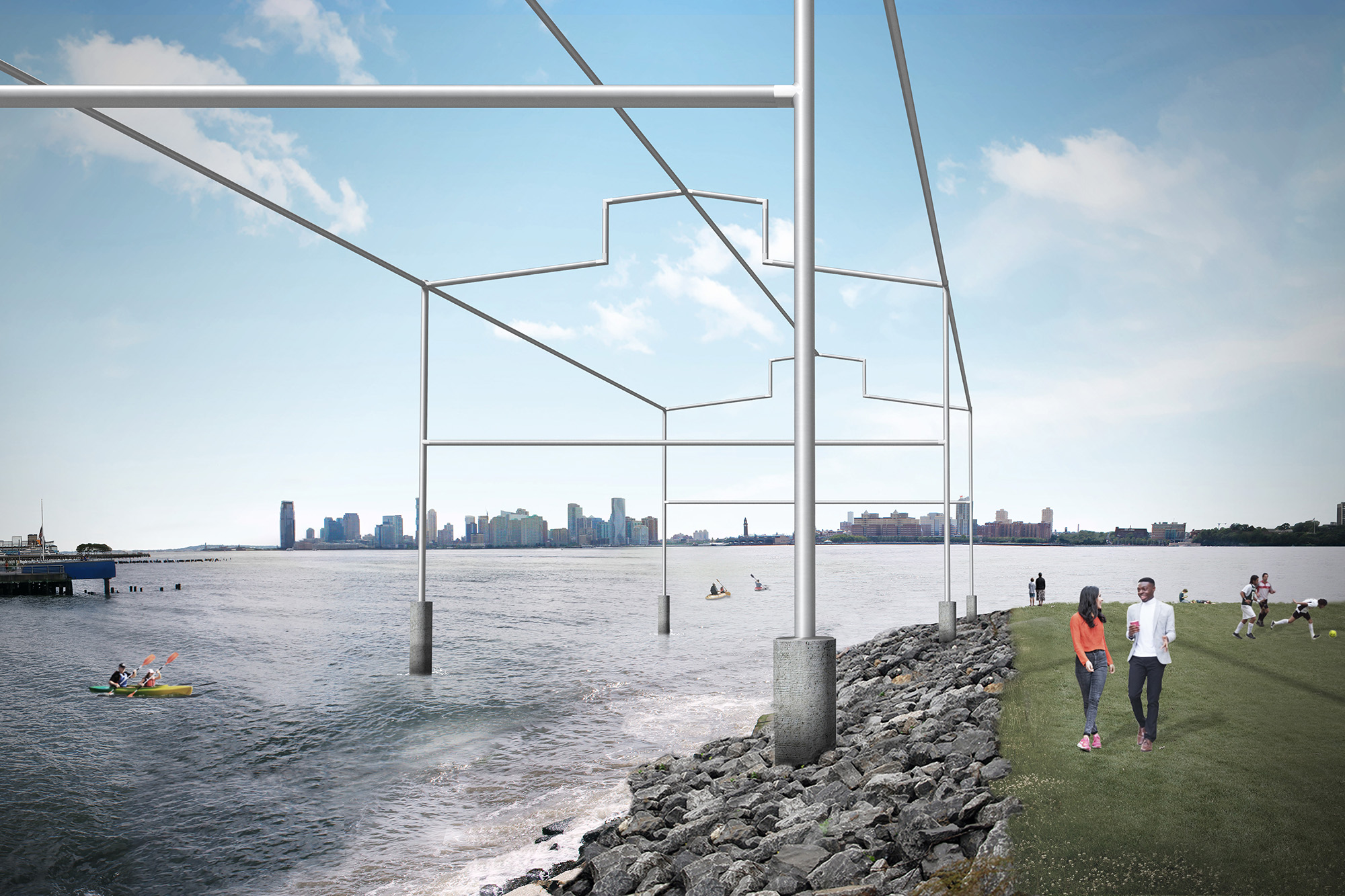
BY LINCOLN ANDERSON | The day has come for work to start on David Hammons’s novel “Day’s End” large-scale sculpture.
On Tues., Sept. 17, the Whitney Museum of American Art celebrated the groundbreaking of “Day’s End,” a permanent public-art project by New York-based artist Hammons.
Slated for completion in fall 2020, the project was developed in collaboration with the Hudson River Park Trust, the state-city authority that is building and operates the 4.5-mile-long Hudson River Park.
The sculpture will be located in the park, along the southern edge of Gansevoort Peninsula, directly across from the museum, within the footprint of the former Pier 52.
“Day’s End” derives its inspiration and name from Gordon Matta-Clark’s 1975 artwork in which he cut openings into the existing, abandoned Pier 52 shed, transforming it into monumental sculpture.
An open structure — resembling a three-dimensional drawing in space — that precisely follows the outline, dimensions and location of the original Pier 52 structure, Hammons’s “Day’s End” will be a “ghost monument” to the earlier work by Matta-Clark and allude to the history of New York’s working waterfront.
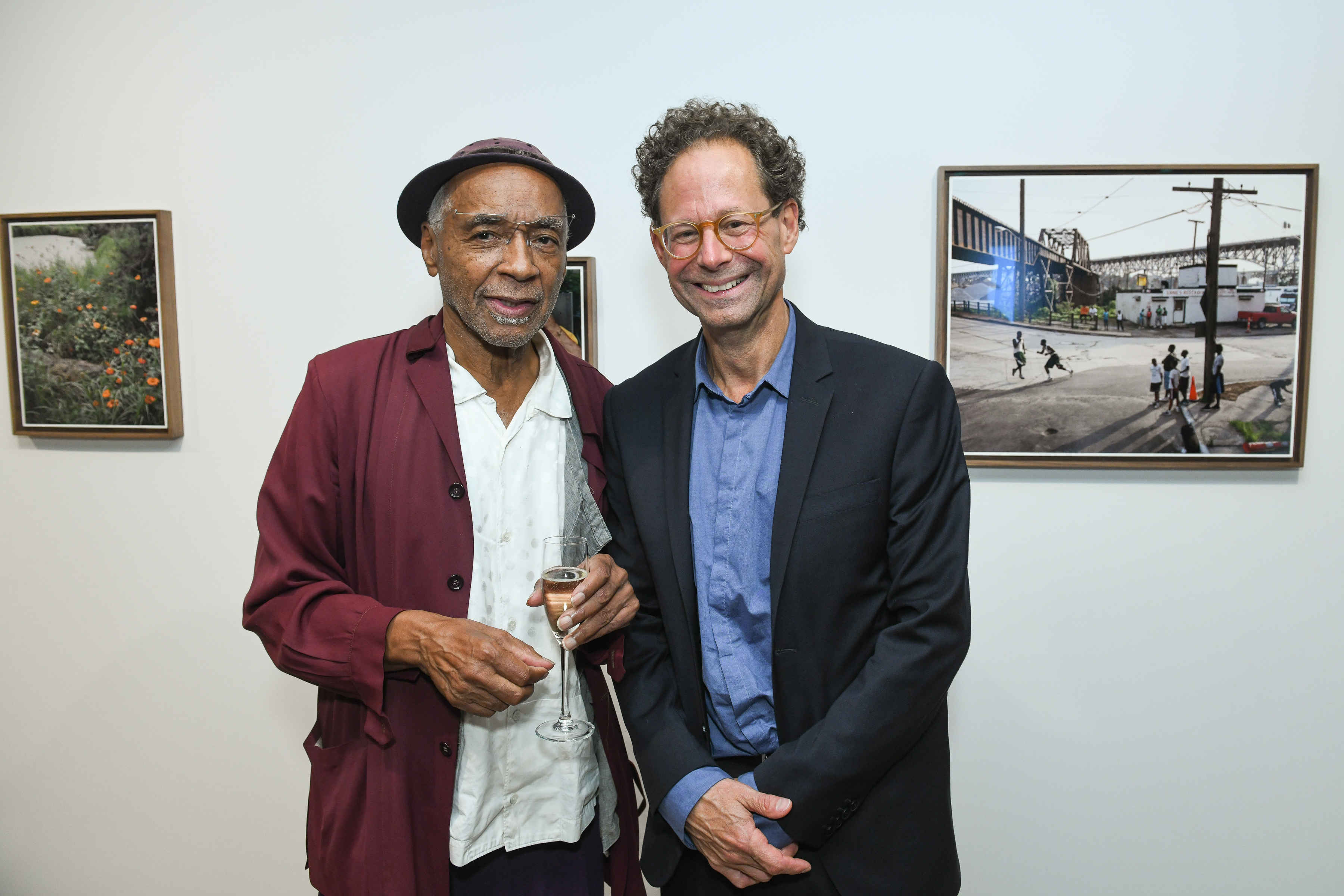
“Day’s End” is designed to coexist with the Trust’s planned park at Gansevoort Peninsula and to bring visitors down to the water’s edge, according to the Whitney.
The celebration took place at sunset in the Whitney’s third-floor Susan and John Hess Family Gallery and Theater, overlooking Gansevoort Peninsula.
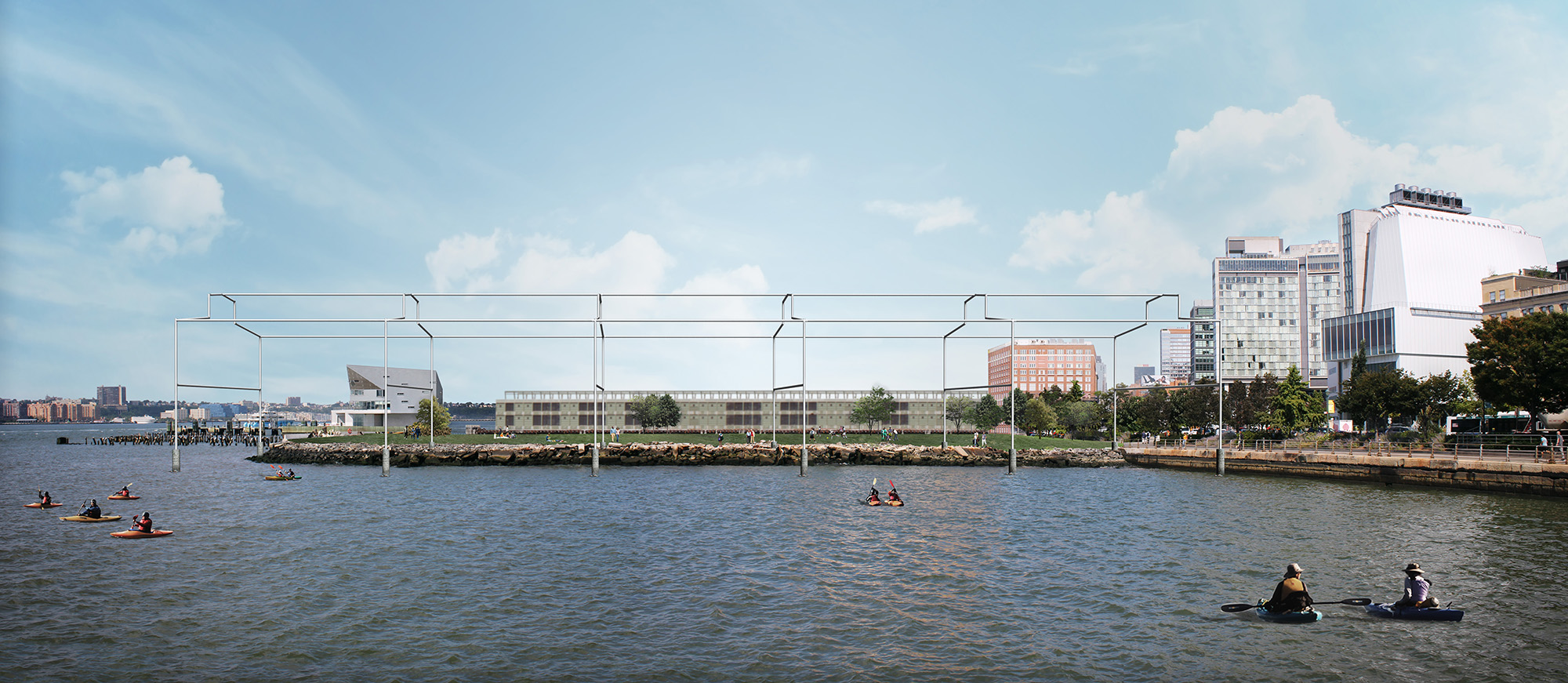
Adam Weinberg, the Whitney’s director, paid tribute to Hammons, an internationally acclaimed artist with longtime ties to the museum and deep roots in New York, and thanked the project’s funders and collaborators during the evening’s remarks.
The commencement of the installation was heralded by a presentation on the Hudson River by the Fire Department’s Marine Company 9 and their fireboat.
Weinberg also announced that the Whitney will present an exhibition, drawn from the museum’s permanent collection, related to Matta-Clark’s seminal work that inspired Hammons’s sculpture. Titled “Around Day’s End: Downtown New York, 1970–1986,” and on view from July 2020 through October 2020, it will include roughly 15 artists, in addition to Matta-Clark, who worked in the Downtown New York scene of the 1970s and early 1980s.
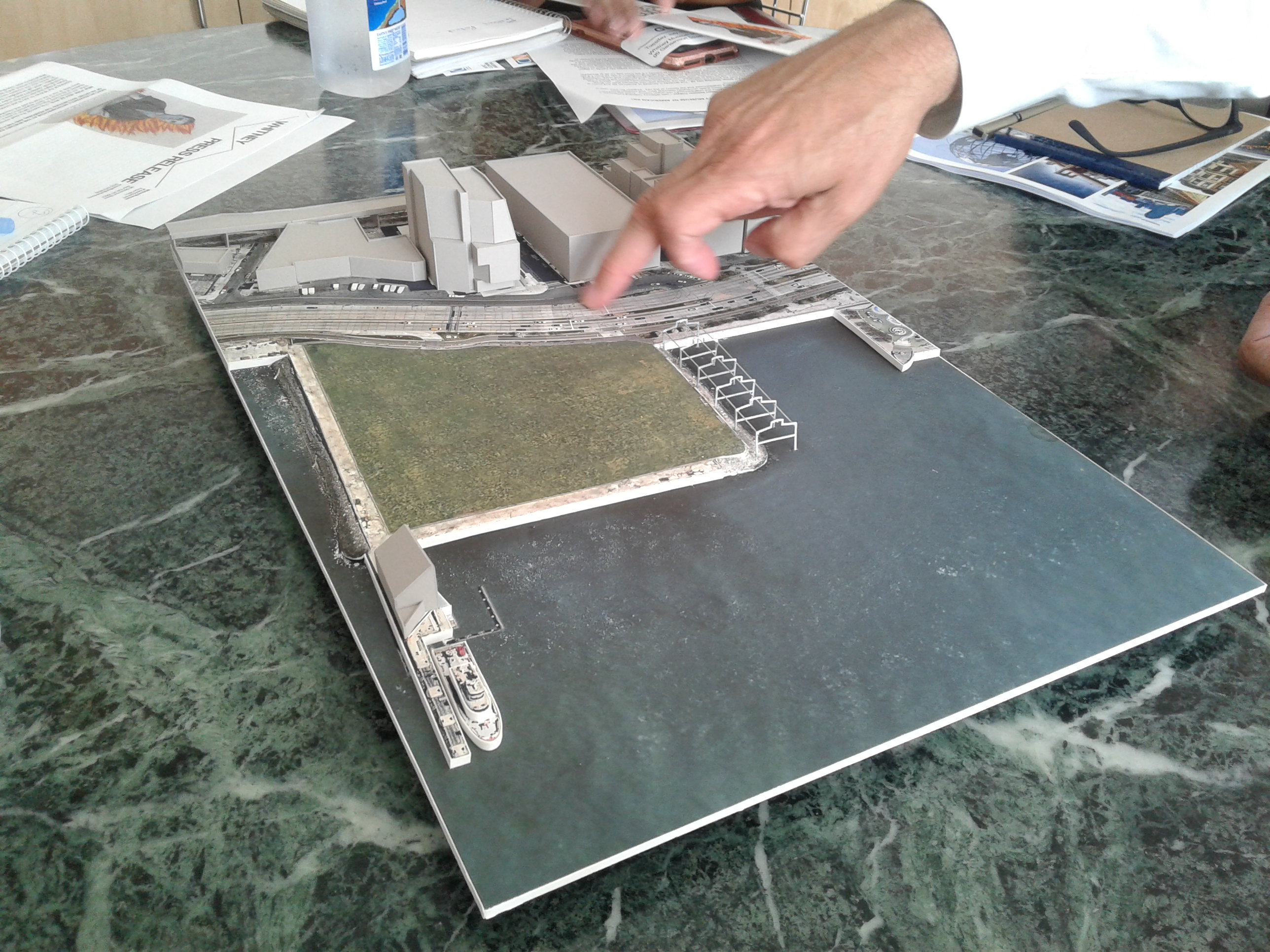
“The Whitney’s collaboration with David Hammons, one of the most influential artists of our time, represents our profound commitment to working with living artists and supporting their visions intimate or grand,” Weinberg said. “We are deeply grateful for the support ‘Day’s End’ has already received from New York City, as well as neighborhood, arts, historic preservation, L.G.B.T.Q., commercial and environmental groups, and we look forward to the ribbon-cutting in fall of 2020.”
“This inspiring project will celebrate the historic waterfront and perfectly align with our newly designed park on the peninsula,” said Madelyn Wils, the Trust’s president and C.E.O. “We’re incredibly appreciative of this collaboration with our neighbors at the Whitney and look forward to seeing the project take shape at what will certainly be one of the most visually dynamic spots in all of Hudson River Park.”
In tandem with the project, the Whitney is developing rich interpretive materials, including the Whitney’s first podcast series, videos, neighborhood walking tours and a children’s guide. These will take Hammons’s “Day’s End” and Matta-Clark’s original “Day’s End” (1975) as jumping-off points for exploring the history of the waterfront and the Meatpacking District, the role of artists in the neighborhood, the diverse cultural and ethnic histories, its L.G.B.T.Q. history, the commercial history, and the ecology of the estuary.
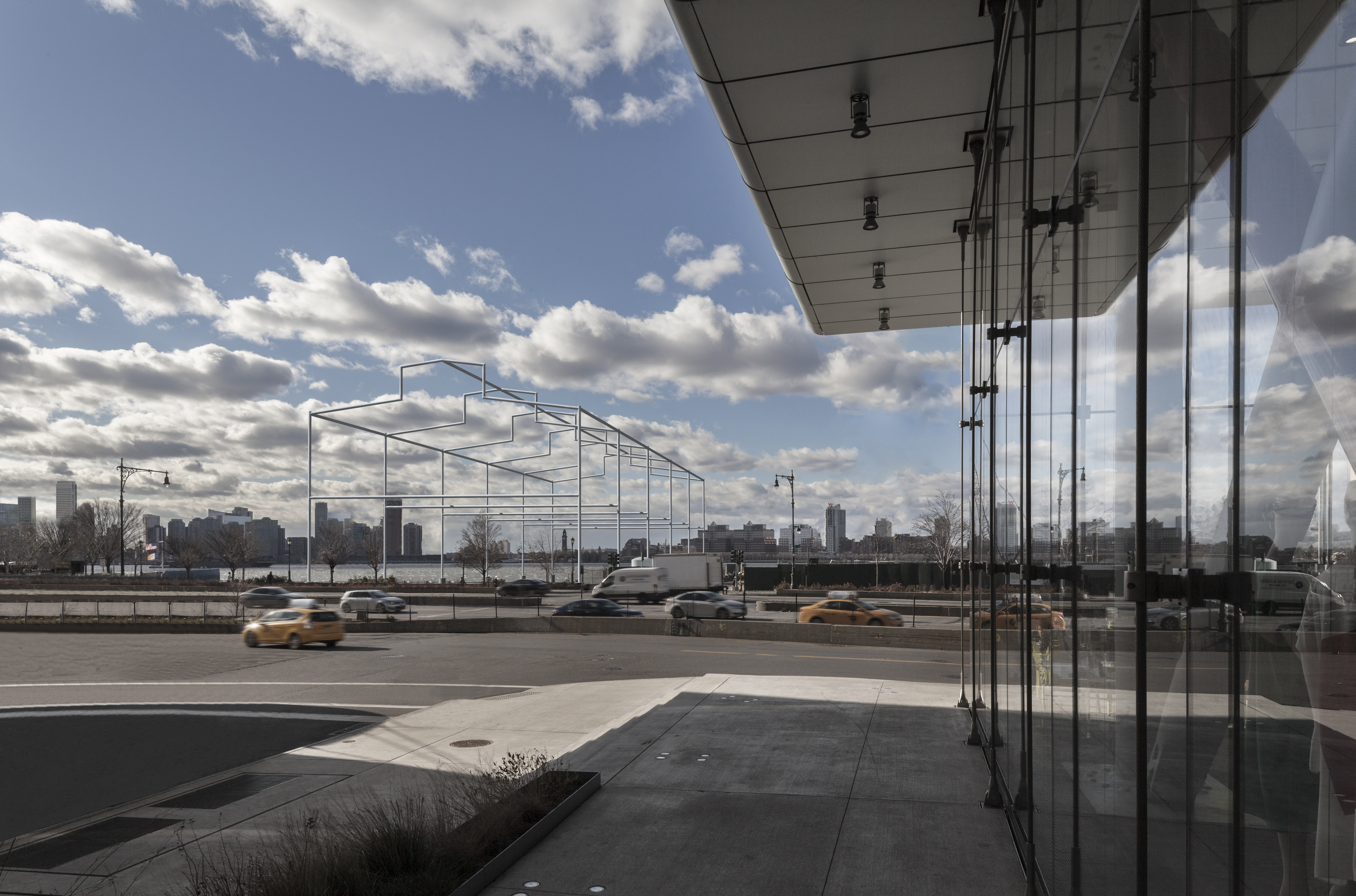
The project will rise directly south of the planned Gansevoort Peninsula park, which will include a sandy beach area with kayak access and a seating area; a salt marsh with habitat enhancements; a large sports field; and on its western side, picnic tables and lounge chairs. That section of the park is slated to start construction next year and open in 2022.






























